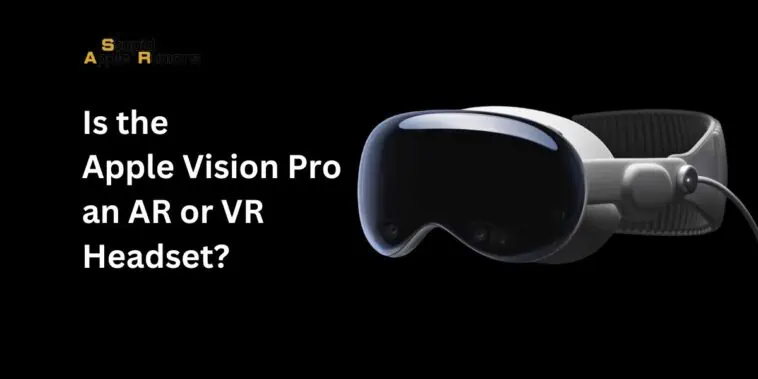Apple has always been a pioneer in technology. From the introduction of the iPhone to the iPad, they have a knack for revolutionizing industries.
When Apple announced its Apple Vision Pro during the WWDC 2023, the tech community was abuzz with one central question: Is it primarily an AR (Augmented Reality) headset or a VR (Virtual Reality) device?
If you’ve been following the tech industry closely, you might have wondered the same. If not, allow me to be your guide into this exciting new world of MR with the Apple Vision Pro.
Is the Apple Vision Pro an AR or VR Headset?
Table of Contents
The Apple Vision Pro is a groundbreaking device that combines the capabilities of both Augmented Reality (AR) and Virtual Reality (VR), classifying it as a mixed-reality headset or MR.
With this innovative product, Apple aims to blend the real and digital worlds seamlessly. Users can either superimpose digital content onto their real-world surroundings (AR) or immerse themselves entirely in a virtual environment (VR).
The Vision Pro’s unique design even includes a Digital Crown, which lets users transition effortlessly between AR and VR modes.
This fusion of AR and VR technologies offers richer, more interactive, and immersive experiences, setting the Vision Pro apart in the spatial computing market.
What is the Apple Vision Pro?
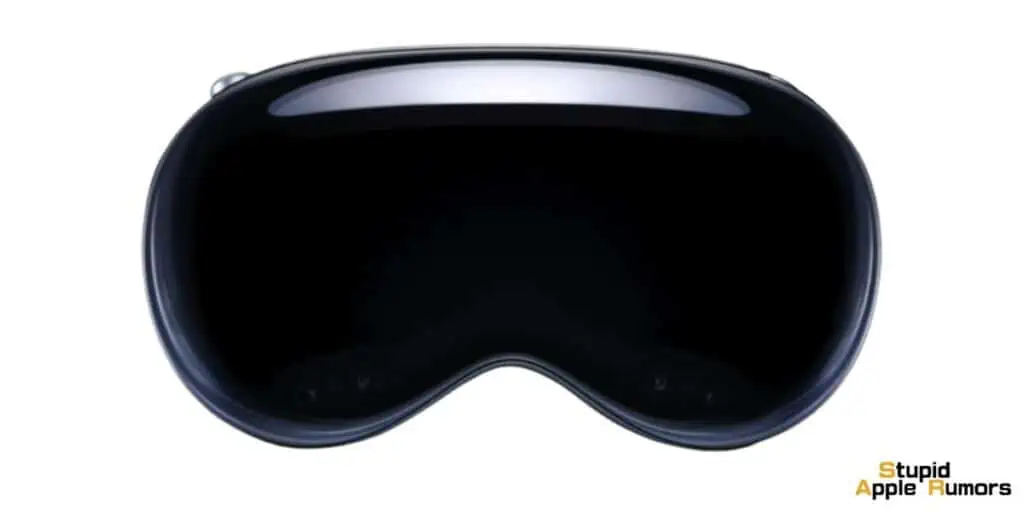
At its core, the Apple Vision Pro is a mixed-reality headset, seamlessly merging the worlds of augmented reality (AR) and virtual reality (VR).
While the device was previewed in 2023, eager enthusiasts and tech professionals will have to wait until early 2024 for its official release.
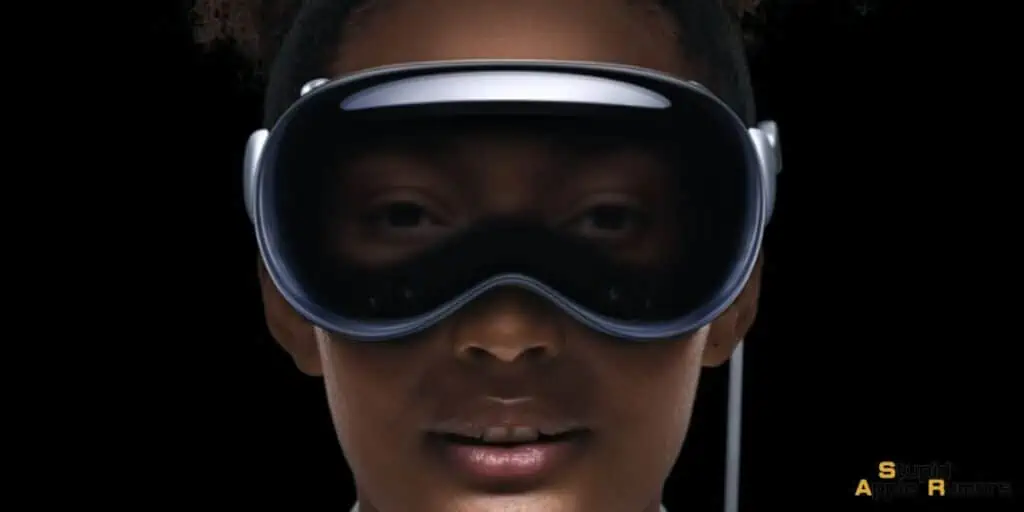
The starting price? A cool $3,499, signaling Apple’s premium positioning in the spatial computing market.
Key Features of the Apple Vision Pro
Apple Vision Pro is not just another AR or VR headset. Instead, it incorporates both technologies, allowing users to superimpose digital content on the real world or immerse themselves in a fully virtual environment.
This combination creates experiences that are richer, more immersive, and highly interactive.
At first glance, the Apple Vision Pro might remind you of ski goggles. However, the resemblance stops there.
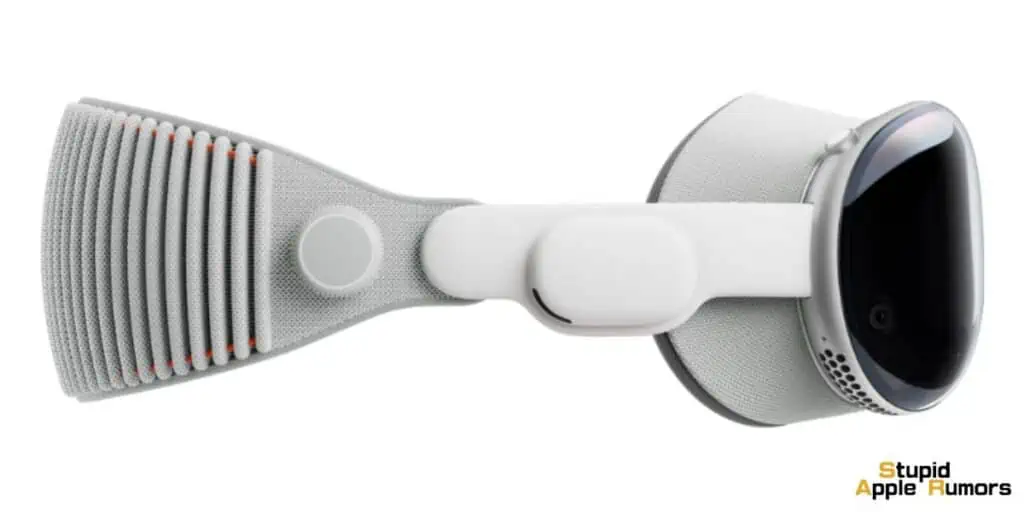
The device boasts a curved glass lens, facilitating multiple high-definition cameras. Its sturdy aluminum exterior speaks of Apple’s signature design philosophy—minimalist yet functional.
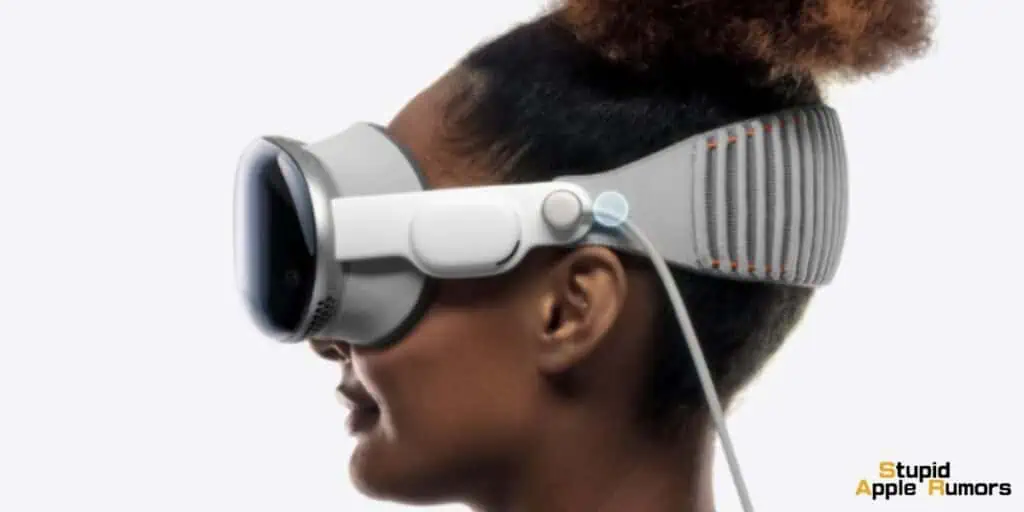
Borrowing from the Apple Watch, the Vision Pro incorporates a Digital Crown. But rather than adjusting time or apps, this crown is a game-changer—it allows users to seamlessly transition between AR and VR modes, ensuring a smooth mixed-reality experience.
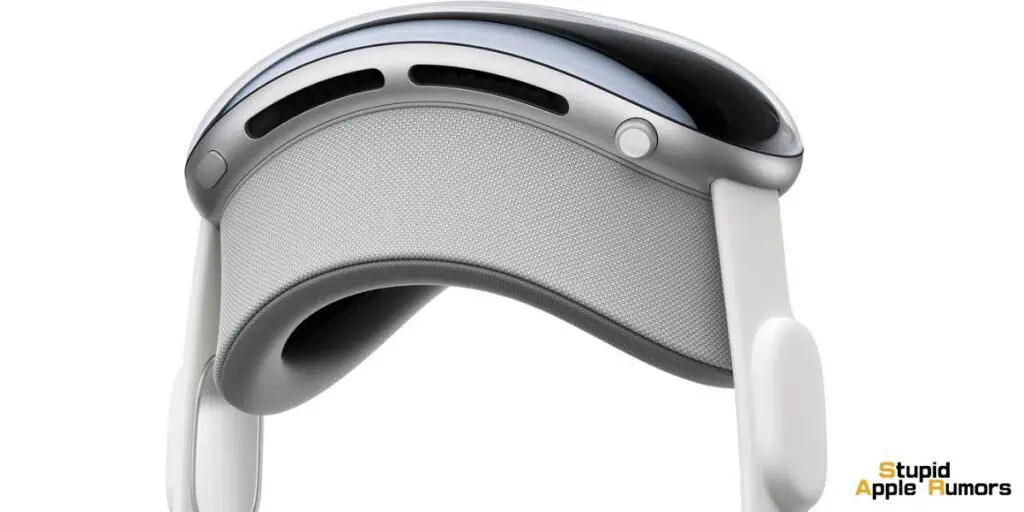
The cameras embedded within the Vision Pro aren’t ordinary. They capture 3D video of the user’s surroundings, relaying it through ultra-clear, pixel-dense displays. This makes augmented reality encounters incredibly lifelike.
Under the Hood
Driving this beast is the powerful combination of Apple’s M2 and R1 processors. These chips ensure that the Vision Pro operates as a standalone device without dependency on external gadgets.
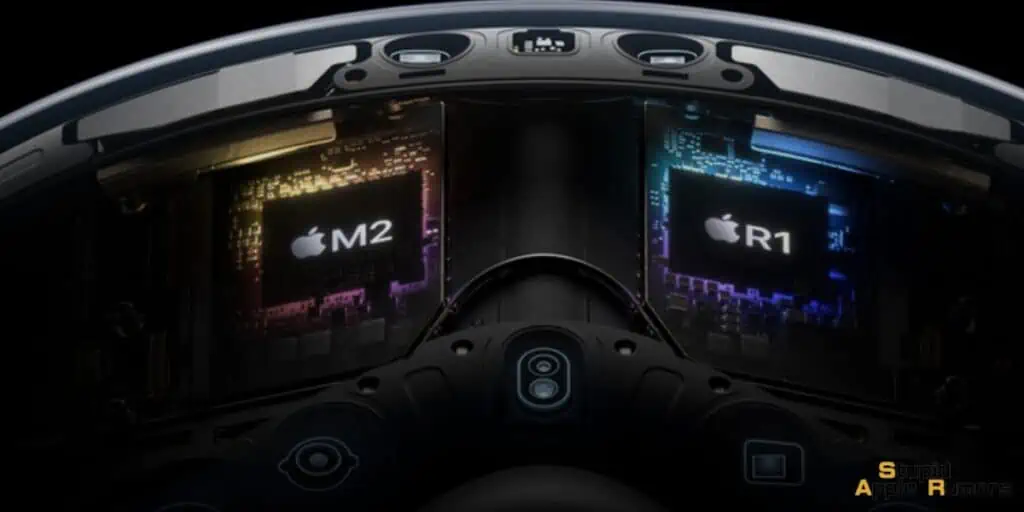
One of the standout features of the Vision Pro is its 2-hour battery attachment, ensuring portability. For those wanting extended usage, the device can also be tethered to an outlet.
Front and center of the Vision Pro is the EyeSight feature. This not only acts as a display but also serves as a user engagement tool. When in VR mode, a colorful waveform graces the glass.
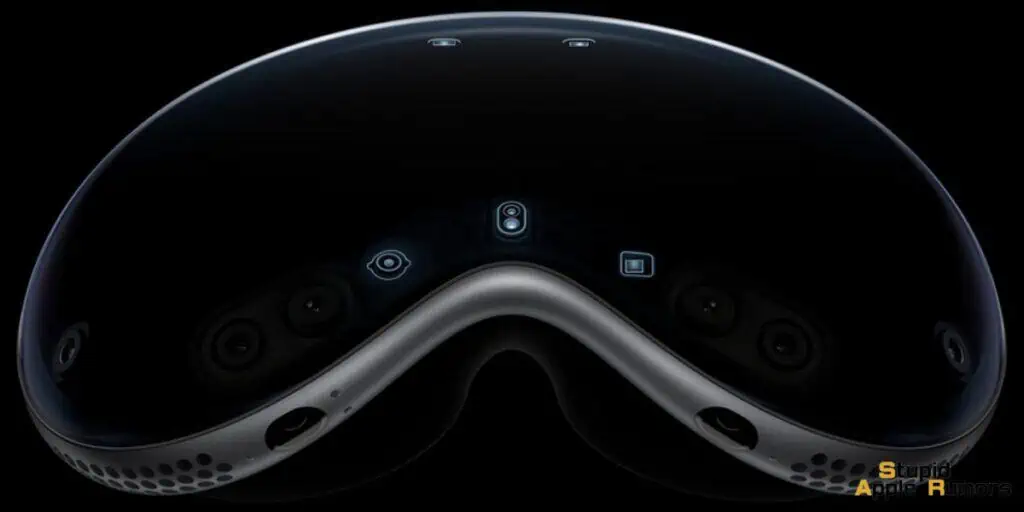
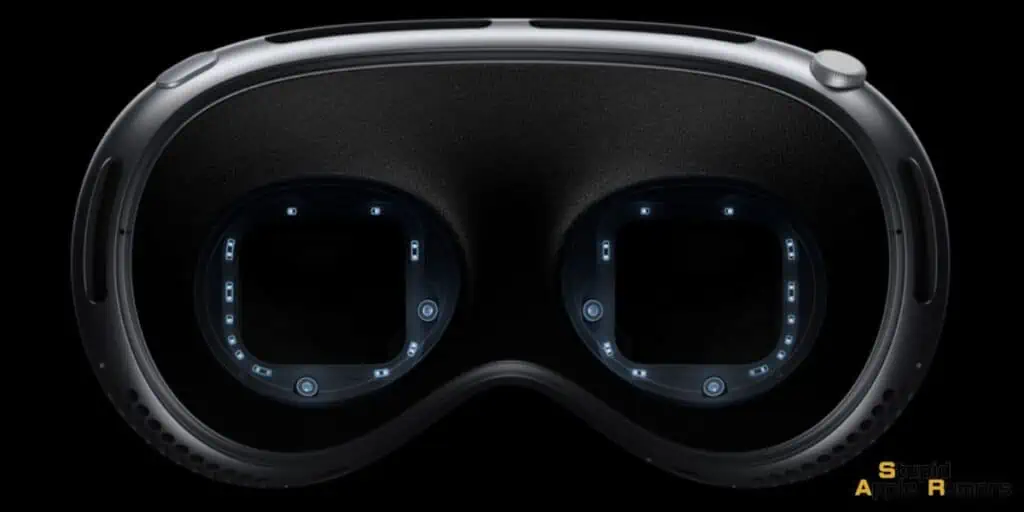
In AR mode, the device displays an intriguing representation of the user’s eyes, complete with a parallax effect.
Finally, Apple takes user security seriously. Building upon the legacy of Face ID and Touch ID, the Vision Pro introduces Optic ID—an iris-scanning system. This biometric feature adds a robust security layer, ensuring user data remains protected.
Apple Vision Pro Specifications
| Specification | Details |
| Display | Apple Vision Pro features a custom micro-OLED display providing high-resolution pictures with 23 million pixels. |
| Audio | Boasts dual-driver audio pods for an outstanding spatial audio experience. |
| Eye Tracking | Incorporates LED and infrared cameras which project invisible light patterns onto both eyes. |
| Cameras | The headset is equipped with a pair of high-resolution cameras that transmit over one billion pixels per second, enhancing clarity in viewing the surrounding environment. |
| Real-time 3D Mapping | Enables precise head and hand tracking, all powered by real-time 3D mapping, elevating the accuracy of gesture tracking to new heights. |
| Dual-chip Performance | The advanced M2 chip powers VisionOS and runs sophisticated computer vision algorithms. Concurrently, R1 chips handle the processing of camera, sensor, and microphone inputs. |
| Optic ID | Guarantees secure access through an Iris Scanning-based authentication system. |
How Does the Apple Vision Pro Work?
The Vision Pro will natively support Apple Immersive Video, offering a captivating 180-degree view coupled with spatial audio to create an unparalleled multimedia experience.
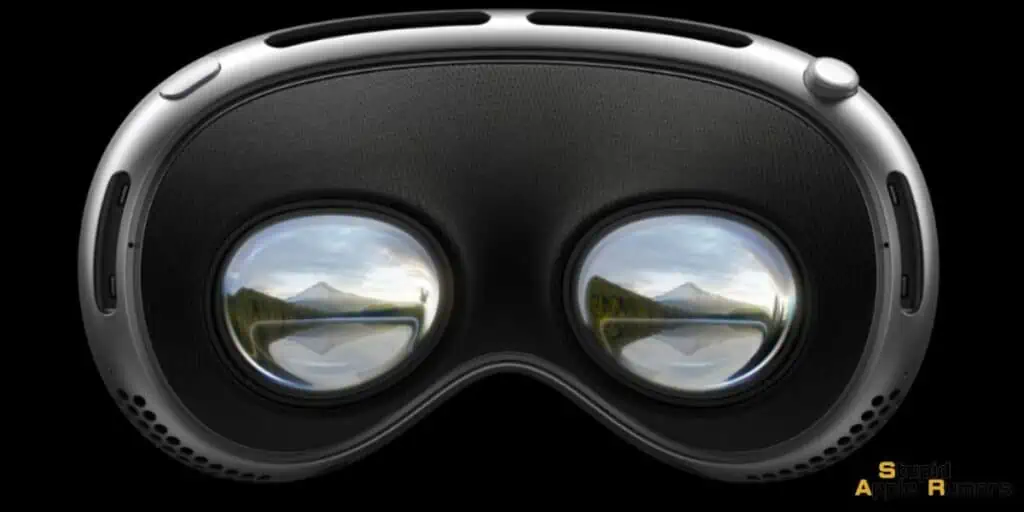
The magic doesn’t stop here. With the Vision Pro, Apple ensures continuity and integration across its ecosystem. Users will have the ability to access and use their favorite apps from their iPhones and Macs, such as Safari, Messages, and Apple Arcade, seamlessly on the Vision Pro.
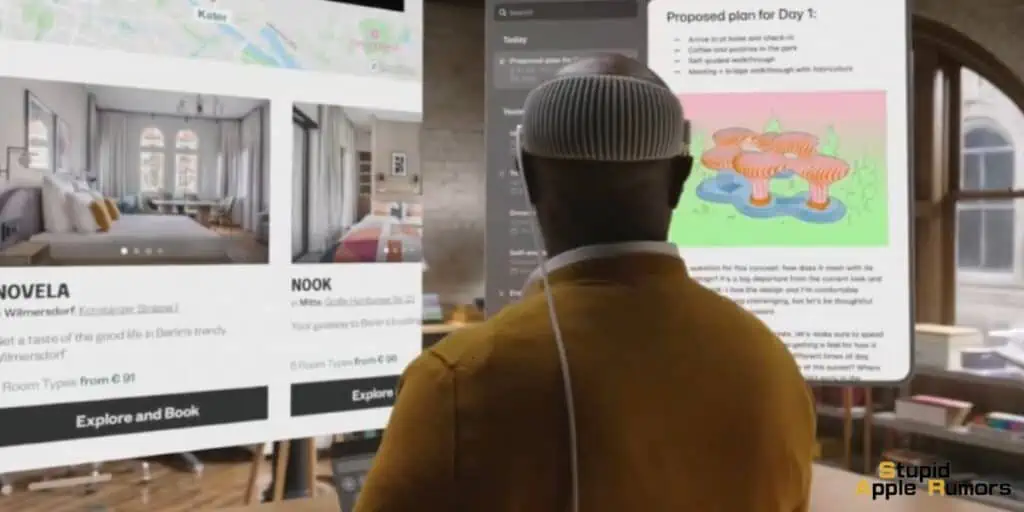
However, Apple acknowledges the unique nature of an AR/VR headset and has made specific modifications to some of these apps.
A standout example is FaceTime, where, given the headset conceals most of the user’s face, Apple introduces the “Persona” – a 3D digital avatar created by scanning the user’s face during the Vision Pro’s setup. This Persona will represent the user during video calls.

Running on the brand-new VisionOS, the Vision Pro promises a plethora of apps at launch, with Apple revealing that “hundreds of thousands” of existing iPhone and iPad apps will be ready for use on the Vision Pro.
Apple even teased the availability of Disney+ on release day, hinting at the Vision Pro’s entertainment potential.
Is the Apple Vision Pro a Platform for Developers?
Recognizing the need to exploit the AR and VR capabilities of the Vision Pro fully, Apple has given developers an early window to design or rework apps for the new platform.
With the inclusion of a 3D camera, the potential for capturing three-dimensional content makes the Vision Pro an exciting prospect for creative minds.
Challenges and Skepticism Surrounding the Apple Vision Pro
However, like every innovation, the Vision Pro is not without its skeptics and challenges. Historically, AR and VR headsets have struggled with user comfort during extended usage.
Issues such as headaches, nausea, and general discomfort have plagued previous attempts in the industry. Apple’s Vision Pro is yet to be tested extensively outside the company’s confines, so only time will reveal its user comfort.
Early reviews from industry experts highlight both the device’s potential and its pitfalls.
Marques Brownlee, a renowned tech influencer, praises the Vision Pro’s eye tracking, hand-gesture recognition, and intuitive scrolling. However, he also raises concerns about the device’s weight, absence of haptic feedback, and the uncanny nature of the FaceTime Persona.
The Competition and Apple’s Unique Positioning
While Apple’s entry into the spatial computing domain has created waves, it’s essential to note that they aren’t the pioneers in this field.
Companies like Google and Microsoft have previously ventured with products like Glass and Hololens, respectively. However, with their characteristic panache, Apple is set to redefine market standards.
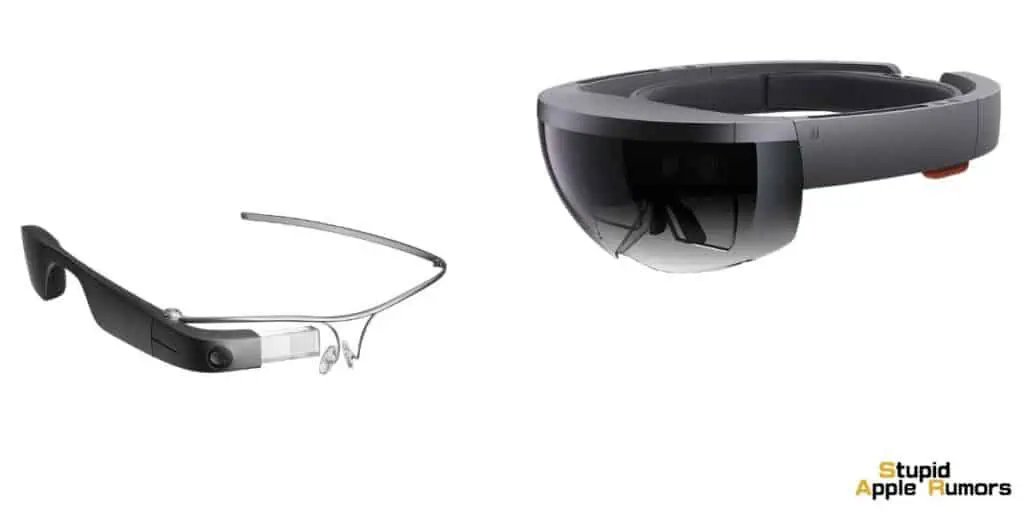
Brands like Xreal Air have tried their hand at augmented reality, but consumer technology in this domain remains limited. With the Vision Pro, Apple is not merely entering the market; it’s poised to dominate it.
And with potential competitors like Samsung lurking in the shadows, 2023 and 2024 promise to be exciting years for spatial computing enthusiasts.
What is VisionOS?
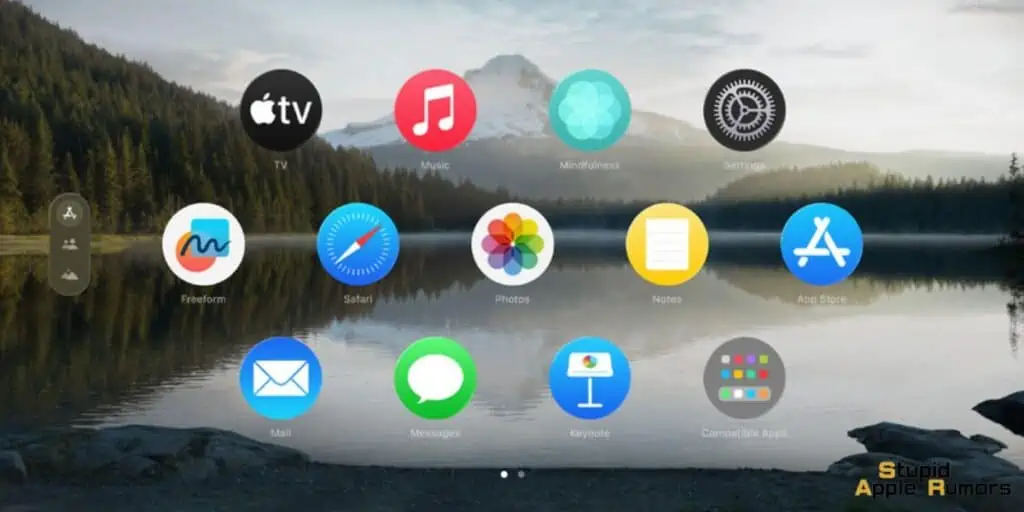
VisionOS is a groundbreaking platform designed by Apple to redefine how you interact with technology.
It’s all about creating immersive experiences, taking the traditional computing experience and transforming it into a spatial environment where 3D content, applications, and users can interact seamlessly.
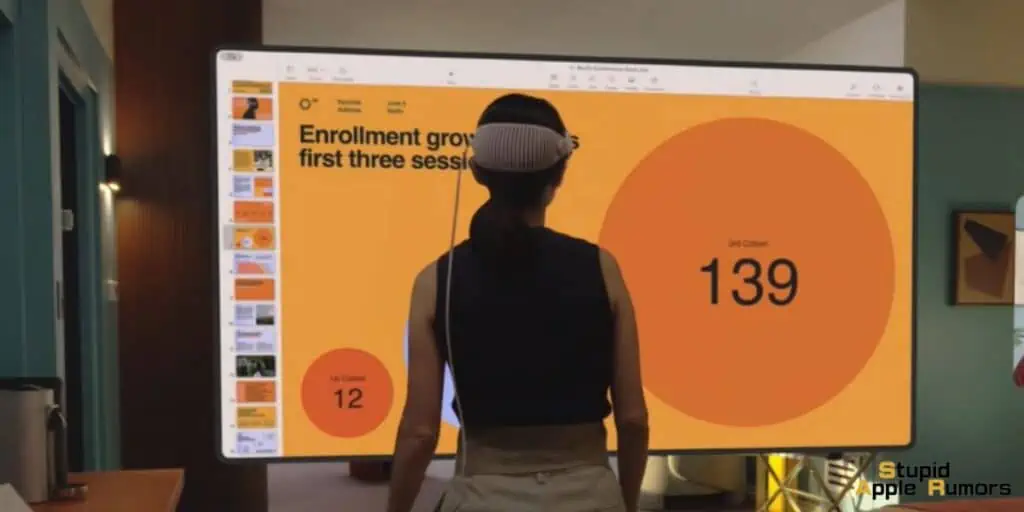
It’s a bridge between virtual and physical reality, offering new ways to work, play, and collaborate.
Advantages of VisionOS:
- Immersive Experiences: With VisionOS, you can explore a universe of apps and games in an entirely new way. Whether it’s 3D content creation or interactive gaming, the sense of depth and realism is unparalleled.
- Innovative Tools: Developers have access to powerful tools like SwiftUI, UIKit, RealityKit, and ARKit, making it easier to craft unique and engaging experiences. With Xcode and the new Reality Composer Pro, you can unleash your creativity.
- Collaboration and Productivity: VisionOS fosters collaboration through shared app windows, FaceTime integration, and the GroupActivities framework. Whether for work or leisure, it facilitates seamless interaction with others.
- Accessibility to Existing Apps: Your favorite iPad and iPhone apps can be used on VisionOS. This integration means that the platform doesn’t alienate existing applications and provides a smooth transition.
- Enhanced Privacy: All these immersive features are designed with privacy in mind, ensuring that user information is kept secure.
Potential Drawbacks of VisionOS:
- Learning Curve: The shift from traditional interfaces to spatial computing can be daunting. Understanding and mastering the new tools and frameworks might require time and effort, especially for developers new to these concepts.
- Hardware Limitations: VisionOS may demand higher-end hardware for optimal performance. This can make access and adoption more costly or limit it to specific devices.
- Compatibility Issues: While existing apps can run on VisionOS, they may not take full advantage of the platform’s capabilities without optimization. This might lead to an inconsistent user experience for some applications.
- Potential Overemphasis on Immersion: While creating immersive experiences is exciting, it might also lead to overwhelming or disorienting experiences for some users, especially those sensitive to augmented or virtual environments.
The Future of Vision Pro
The Vision Pro is a significant step forward in AR/VR technology, but it’s not without its challenges.
The device showcases Apple’s technical prowess and commitment to creating integrated experiences across its device ecosystem.
However, the true success of the Vision Pro will hinge on Apple’s ability to address user comfort and refine features to ensure an immersive yet natural experience.
As Apple continues to innovate, the Vision Pro stands as a testament to the company’s dedication to shaping the future of technology.
While the device may have its skeptics now, it could very well pave the way for a new era in AR and VR experiences.
Recommended Read

